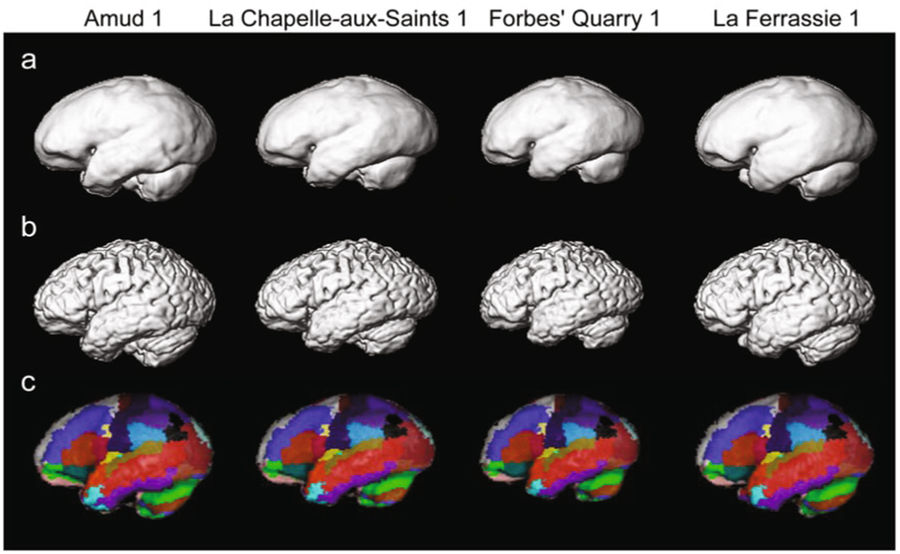INSUBCONTINENT EXCLUSIVE:
Ever since a paleontologist discovered the first Homo neanderthalensis skeleton in 1829, scientists have tried to piece together why Homo
sapiens eventually thrived, while Neanderthals disappeared around 40,000 years ago.By comparing their prehistoric skulls to ours, scientists
learned that Neanderthal brains were slightly larger than ours, both at birth and at full size, and that they may have lived longer than our
Neanderthal brain models (a) with modern human scans (b) to label theoretical parts of the Neanderthal brain (c) | Credit: Kochiyama et
al.Because of their allegedly inferior communication skills and long-term memory, Neanderthals may have had more trouble adapting to climate
them to the fossilized skulls of four ancient Homo sapiens and four Neanderthals
alive.The shape displacement between early humans and Neanderthals showed how our brains mostly differed on the right side, where the
Ogihara and his colleagues were surprised by their findings
significantly more cognitive power
This region helps coordinate cognitive processes in different parts of the brain in the correct order, and our larger cerebellums increased
memory in contemporary humans.And Washington University neuroscientist Kari L

